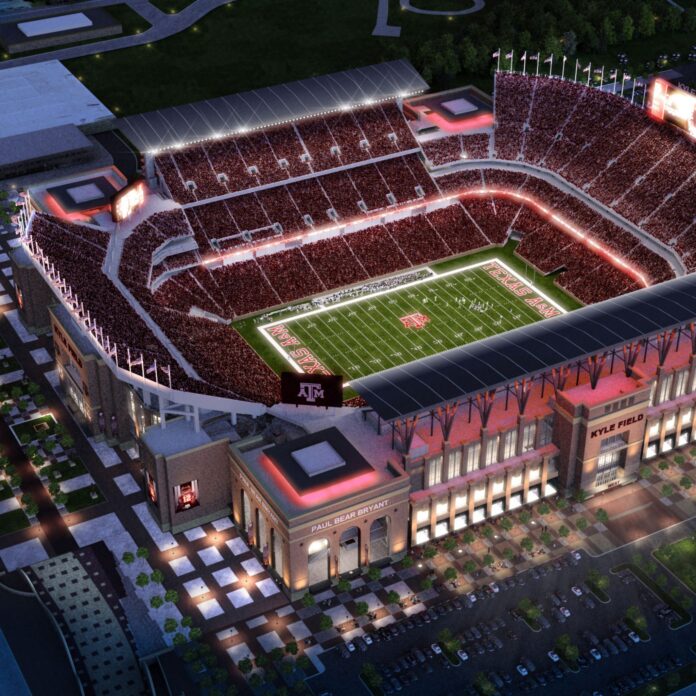Sports are top of mind for many Americans this weekend, and for those who leave behind the comfort of the couch to attend a game in person, the second screen is an important part of the game day experience. So goes the thinking that has motivated millions in spending on stadium distributed antenna systems.
Texas A&M knew it would need a new distributed antenna system when it made the decision to demolish and renovate Kyle Field. The original plan called for hundreds of antennas connected with copper cable, complemented by separate cable networks to support Wi-Fi and high-definition TV monitors throughout the venue. Plans for these three separate networks were underway when IBM’s “smarter stadium” team convinced Kyle Field’s IT team to instead use a fiber network that can support DAS, Wi-Fi and IPTV.
“The IBM team came in and did a really good job of presenting the positive points of an optical network,” said Matthew Almand, IT network architect for the Texas A&M University System.
A key catalyst in A&M’s decision was Todd Christner, a former IBM executive who now directs wireless business development at Corning. Christner was part of the team that brought the fiber idea to A&M, and Corning optical fiber is the backbone of the network.
Bill Cune, VP of commercial technology at Corning, said A&M ended up spending about two-thirds of the amount the school had originally planned to spend on the separate networks. The cost savings come primarily from the higher bandwidth and lower power requirements of fiber versus coaxial cable.
The Kyle Field system supports more than 1,090 DAS antennas in 50 sectors, 1500 HD TVs and 1300 Aruba Wi-Fi access points. The Wi-Fi network supports fans as well as internal operations. The network is also ready to scale, with 4,000 spare fibers at 540 locations.
“There were some leaps of faith and there was a decision to be leading edge with the technology,” said Almand. One leap of faith was the belief that A&M’s installers and integrators would be successful working with fiber, which is less familiar than cable to many technicians.
“There’s definitely been a gear-up cycle, getting to a new confidence level,” said Almand. “Sometimes it’s good to break out of your comfort zone.”

